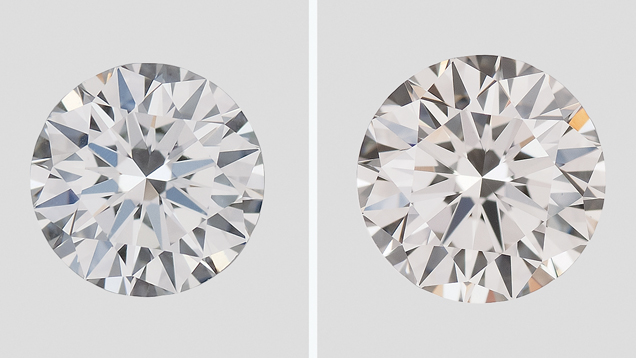In the developing universe of hpht vs cvd diamonds, the decision between HPHT (High Tension High Temperature) and CVD (Substance Fume Statement) diamonds has turned into a point of convergence for shoppers looking for both quality and worth. As industry pioneers in the diamond area, we offer a thorough examination of these two conspicuous strategies for making lab-grown diamonds, looking at their cycles, advantages, and contrasts to help customers in going with informed choices.
Outline of HPHT Diamonds
HPHT diamonds are made by reproducing the high-strain and high-temperature conditions tracked down profound inside the World’s mantle. This strategy imitates the regular diamond-shaping climate, bringing about diamonds with physical and compound properties practically indistinguishable from those mined from the earth.
The HPHT Cycle
The HPHT cycle includes three essential advances:
Carbon Source: A carbon source, frequently graphite, is put in a metal impetus, ordinarily a combination of iron, nickel, and cobalt.
High Strain and Temperature: This gathering is exposed to outrageous tensions (around 5-6 GPa) and temperatures (1500-2000°C) in a press intended to copy the World’s mantle conditions.
Diamond Development: Under these circumstances, carbon particles bond together to frame diamonds more than a few days.
Benefits of HPHT Diamonds
Bona fide Sythesis: HPHT diamonds have a similar gem construction and synthetic organization as normal diamonds, making them vague without particular hardware.
Variety Reach: The HPHT cycle considers the production of diamonds in many tones, including different shades of blue, pink, and yellow.
High Virtue: HPHT diamonds are many times viewed as cleaner, with less incorporations contrasted with some CVD diamonds.
Hindrances of HPHT Diamonds
Cost: HPHT diamonds can be more costly because of the perplexing apparatus and high energy utilization expected for the interaction.
Restricted Sizes: By and large, HPHT diamonds were delivered in more modest sizes, despite the fact that headways are extending the reach.
Outline of CVD Diamonds
CVD diamonds are delivered utilizing an alternate methodology that includes storing carbon molecules from a gas stage onto a substrate to shape diamond layers. This strategy considers exact command over the diamond’s qualities.
The CVD Cycle
The CVD interaction incorporates a few stages:
Readiness: A substrate, frequently a little diamond seed, is put in a vacuum chamber.
Gas Presentation: A combination of carbon-containing gases (typically methane) and hydrogen is brought into the chamber.
Diamond Development: The gases are ionized by microwave radiation or different strategies, making carbon molecules store onto the substrate and take shape into diamond.
Benefits of CVD Diamonds
Savvy Creation: CVD diamonds are for the most part more affordable to deliver than HPHT diamonds because of the lower energy prerequisites and less difficult hardware.
Controlled Development: The CVD cycle takes into consideration exact command over the diamond’s tone, clearness, and size, prompting steady and unsurprising outcomes.
Moral Contemplations: CVD diamonds are frequently viewed as more moral as they don’t include similar natural and human privileges worries as conventional mining.
Impediments of CVD Diamonds
Considerations and Contaminations: CVD diamonds might have more incorporations and variety varieties contrasted with HPHT diamonds, however progressions in innovation are resolving these issues.
Unmistakable Highlights: CVD diamonds might show one of a kind development designs that can be identified with specific gemological gear.
Looking at HPHT and CVD Diamonds
Quality and Appearance
Both HPHT and CVD lab grown diamonds can accomplish elevated degrees of clearness and variety, yet they might have unmistakable highlights:
HPHT Diamonds: Frequently display less considerations and can be tracked down in a more extensive scope of varieties because of the idea of the development cycle.
CVD Diamonds: For the most part have less variety and lucidity choices yet benefit from controlled development conditions, bringing about diamonds with less noticeable imperfections.
Cost Proficiency
HPHT Diamonds: Regularly higher in value because of the energy-serious cycle and modern innovation utilized.
CVD Diamonds: More practical, settling on them a famous decision for those looking for great lab-grown diamonds at a lower sticker cost.
Natural Effect
HPHT Diamonds: While less destructive than conventional mining, HPHT actually requires huge energy and assets.
CVD Diamonds: By and large have a more modest ecological impression because of the diminished energy necessities and absence of mining.
Picking either HPHT and CVD Diamonds
While choosing among HPHT and CVD diamonds, think about the accompanying variables:
Reason: For high-virtue, high-variety diamonds, HPHT may be ideal. For economical purchasers looking for quality and moral obtaining, CVD offers an appealing other option.
Spending plan: HPHT diamonds frequently come at a higher cost than normal, while CVD diamonds give a more reasonable choice without critical penances in quality.
Moral Inclinations: CVD diamonds are leaned toward for their diminished ecological and moral worries.
Conclusion
Both HPHT and CVD diamonds offer exceptional advantages and take care of various purchaser inclinations. By understanding the subtleties of every strategy, you can settle on an educated decision that lines up with your own necessities and moral qualities. As the innovation behind lab-grown diamonds keeps on progressing, both HPHT and CVD strategies are probably going to advance, offering considerably more choices for customers later on.

